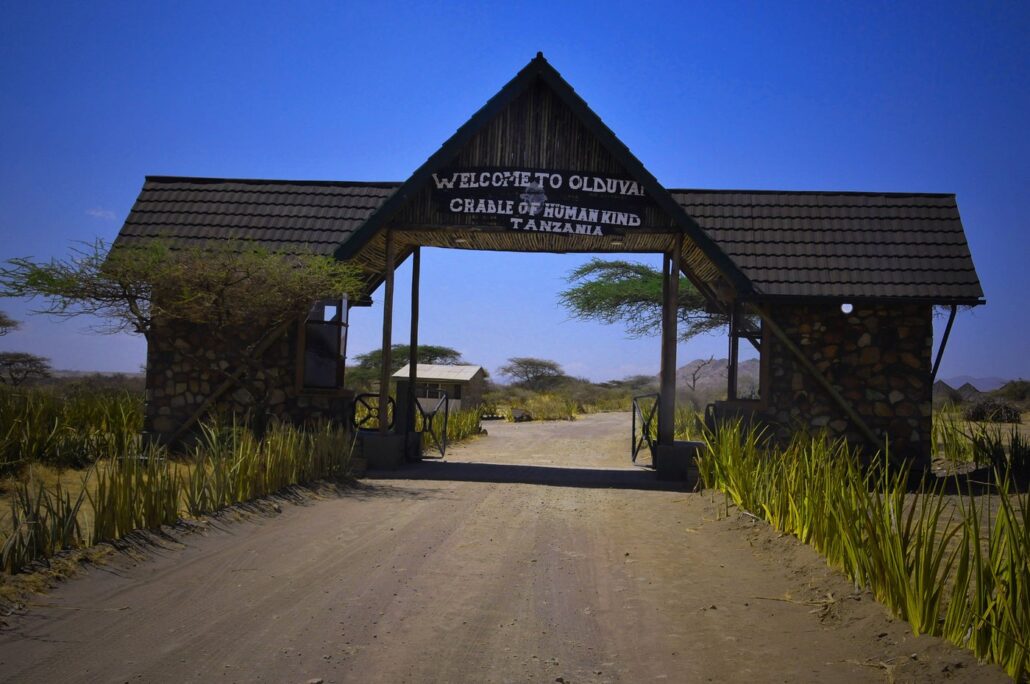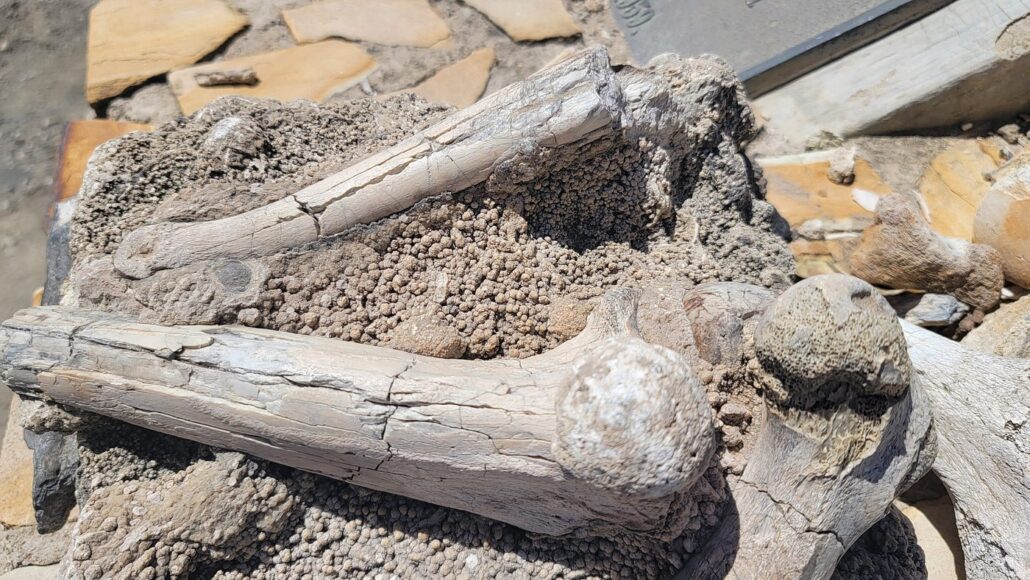The Olduvai Gorge – Ngorongoro
Olduvai Gorge, often referred to as the “Cradle of Mankind,” is one of the most significant paleoanthropological sites in the world. Located in the Ngorongoro Conservation Area (NCA) in northern Tanzania, this site has provided crucial evidence about early human evolution and has helped shape our understanding of the origins of humanity.
This guide offers an in-depth look at Olduvai Gorge, covering its location, history, how to get there, best time to visit, main attractions, and activities to engage in.
Location Of The Olduvai Gorge Ngorongo
Olduvai Gorge is situated within the Ngorongoro Conservation Area in northern Tanzania. It is approximately 45 kilometers (28 miles) long and cuts into the Serengeti plains, extending from the Ngorongoro highlands to the eastern Serengeti plains.

The gorge lies about 200 kilometers (124 miles) west of Arusha and 40 kilometers (25 miles) south of the Serengeti National Park.
History and Significance
Olduvai Gorge has been a focal point for paleoanthropologists since the early 20th century. It was brought to international attention by the pioneering work of Mary and Louis Leakey, who conducted extensive excavations in the area.
Key Discoveries Of The Olduvai Gorge Ngorongoro
- Homo habilis: In 1960, the Leakeys discovered fossilized remains of Homo habilis, one of the earliest members of the human genus, dating back about 1.9 million years.
- Paranthropus boisei: Another significant find was the skull of Paranthropus boisei, also known as “Nutcracker Man,” which lived approximately 1.8 million years ago.
- Oldowan Tools: Olduvai Gorge is the type site for Oldowan tools, which are some of the earliest stone tools used by hominins. These tools date back to about 2.1 million years ago.
Geological Importance Of the Olduvai Gorge
The stratified layers of Olduvai Gorge offer a unique chronological record of early human evolution, climatic changes, and environmental shifts over the past two million years. These layers provide a detailed timeline of the development of early hominins and their technological advancements.
How to Get To The Olduvai Gorge
By Air
The nearest major airport is Kilimanjaro International Airport (JRO), located near Arusha. From there, you can take a domestic flight to Lake Manyara Airport or Seronera Airstrip in the Serengeti National Park. These airports are closer to Olduvai Gorge and offer shorter transfer times.
By Road
Olduvai Gorge is accessible by road from Arusha, which is about a 4-5 hour drive. The route takes you through scenic landscapes and can be combined with visits to the Ngorongoro Crater and the Serengeti. A 4×4 vehicle is recommended, especially during the rainy season when some roads may become challenging.
By Public Transport
Public buses and shuttles operate between Arusha and Karatu, a town near the NCA. From Karatu, you can hire a taxi or arrange for a transfer to Olduvai Gorge. This option is more budget-friendly but less convenient than private transport.
Best Time to Visit The Olduvai Gorge Ngorongoro
Dry Season (June to October)
The dry season is the best time to visit Olduvai Gorge, as the weather is generally dry and sunny, making travel easier. The conditions are ideal for exploring the site and the surrounding areas.
Wet Season (November to May)
The wet season is marked by lush green landscapes and fewer tourists. However, heavy rains in March and April can make roads difficult to navigate. The period from December to March is good for bird watching and the calving season of many herbivores.
Main Attractions In The Olduvai Gorge Ngorongoro
Olduvai Gorge Museum
The Olduvai Gorge Museum, located near the main excavation sites, offers a comprehensive overview of the archaeological significance of the area. The museum’s exhibits include fossils, stone tools, and informative displays about the history of human evolution.
Highlights
- Fossil Exhibits: View fossilized remains of early hominins, including Homo habilis and Paranthropus boisei.
- Stone Tools: See examples of Oldowan and Acheulean stone tools that were used by early humans.
- Educational Displays: Learn about the geological layers of Olduvai Gorge and their significance in understanding early human history.
Excavation Sites
Several key excavation sites within Olduvai Gorge have yielded important discoveries. Guided tours often include visits to these sites, where visitors can see where significant fossils and tools were unearthed.
Highlights
- Site FLK (Frida Leakey Korongo): One of the most famous sites where many significant fossils and tools have been found.
- Site DK (Douglas Korongo): Another important site known for its well-preserved stone tools and fossilized bones.
Shifting Sands
The Shifting Sands are unique crescent-shaped dunes located near Olduvai Gorge. These dunes, composed of volcanic ash from nearby volcanoes, move slowly across the plains, creating a striking and ever-changing landscape.
Laetoli
Laetoli, located about 45 kilometers (28 miles) south of Olduvai Gorge, is famous for its fossilized hominid footprints. These footprints, preserved in volcanic ash, provide direct evidence of bipedalism in early hominins.
Highlights
- Footprint Trails: See casts and replicas of the ancient footprints made by Australopithecus afarensis over 3.6 million years ago.
- Interpretive Displays: Learn about the significance of the footprints and what they reveal about early hominid behavior and locomotion.
5 Best Activities/Things to do In Olduvai
Guided Tours
Guided tours of Olduvai Gorge are available and highly recommended. These tours are led by knowledgeable guides who provide in-depth information about the archaeological discoveries, the geology of the area, and the significance of the site in human history.
Museum Visits
A visit to the Olduvai Gorge Museum is a must. The museum’s exhibits provide a comprehensive overview of the site’s archaeological significance, showcasing fossils, stone tools, and informative displays.
Hiking and Walking
While exploring the gorge, visitors can take short hikes to various points of interest, including excavation sites and viewpoints. These walks offer a closer look at the geological features and allow for a more intimate connection with the landscape.
Bird Watching
The area around Olduvai Gorge is home to a variety of bird species, making it a good spot for bird watching. Bring binoculars to spot raptors, weavers, and other local birds.
Cultural Visits
Visits to nearby Maasai villages offer insights into the traditional lifestyle of the Maasai people. These cultural interactions provide a deeper understanding of the region’s human heritage and the coexistence of the Maasai with the wildlife.
Accommodations In Ngorongoro
Luxury Lodges
- Ngorongoro Crater Lodge: Located on the rim of the Ngorongoro Crater, this luxurious lodge offers stunning views and top-notch amenities.
- Elewana The Manor at Ngorongoro: A luxurious lodge set in a coffee plantation, offering elegant accommodations and a range of activities.
Mid-Range Lodges and Camps
- Ngorongoro Sopa Lodge: Located on the eastern rim of the Ngorongoro Crater, this lodge offers comfortable accommodations and panoramic views.
- Rhino Lodge: A mid-range option located close to the crater rim, offering cozy rooms and a rustic atmosphere.
Budget Campsites
- Simba Campsite: A public campsite located on the crater rim, providing basic facilities and stunning views.
Tips for a Great Experience
Plan Ahead
- Book Early: Especially during peak seasons, accommodations and tours can fill up quickly, so it’s advisable to book in advance.
- Hire Knowledgeable Guides: A good guide can significantly enhance your experience by providing detailed information and insights about the sites.
Pack Essentials
- Comfortable Clothing: Wear light, breathable clothing and sturdy walking shoes, as you may be walking on uneven terrain.
- Sun Protection: Bring a hat, sunglasses, and sunscreen to protect yourself from the strong sun.
- Water and Snacks: Carry enough water to stay hydrated, especially during the hotter months, and bring some snacks for the longer tours.
- Camera: Don’t forget your camera to capture the stunning landscapes and significant archaeological sites.
Be Respectful
- Follow Guidelines: Adhere to all site regulations and respect the environment to ensure a safe and enjoyable experience for everyone.
- Cultural Sensitivity: When visiting Maasai villages, be respectful of their customs and traditions.
